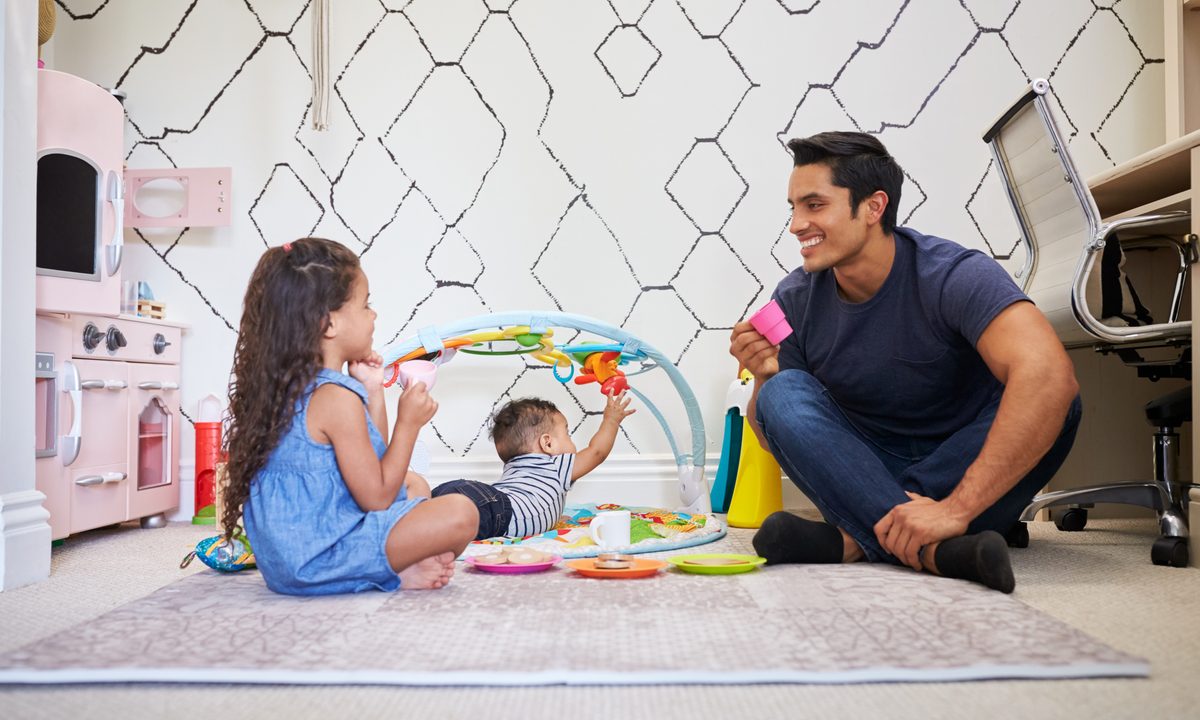It’s not uncommon for babies to dislike tummy time, especially for those just being introduced to this new position. It can be a bit stressful for parents when their baby starts to cry or squeal the minute they’re placed on their stomach, but it doesn’t have to be. There are many ways to get a baby to like tummy time; it’s just a matter of finding the right strategy for your unique child.
Tummy time is when you place the baby on their belly so they can work their core and neck muscles to get them ready for new activities like rolling over, sitting up, and crawling. Studies have shown that when tummy time isn’t as encouraged, babies are likelier not to crawl. They’ve also shown that babies who spend more time on their tummies crawl sooner. The WHO recommends tummy time which has also been shown to improve gross motor skills and overall development and prevent flat head syndrome.
While many babies don’t like being put down and having to work out, these tips will help you coax a resistant baby into smiling the next time you put them down.
Get them comfortable with it right away

It might surprise you to know that babies can actually start tummy time as early as just a few days old. If you start your infant this young, you can do a few shorter sessions a day instead of longer sessions when they’re older. Just 2 to 3 minutes on their stomach, two or three times a day, can benefit your infant.
As your baby gets older and stronger, they can spend longer on their stomachs. You should be supervising your infant at all times when they are on their stomachs. The AAP suggests that by the age of 2 months, your baby should be spending between 15 and 30 minutes of tummy time each day. If you start tummy when your baby is a newborn this becomes routine for them, however, that still doesn’t mean they’ll love tummy time. Here are a few suggestions to encourage your little one to find joy in playing on their stomachs.
Give them toys to reach for

Once your baby is a few months old, they can track objects with their eyes and show interest in grasping at objects near them. Putting a toy in front of them when you put them on their stomach will distract them from the fact their muscles are working hard because they’ll be so interested in what’s in front of them. After a few months, they will start to use their feet to try to push themselves toward the toy as a precursor to crawling.
Use toys that have high-contrast colors on them like black and white to maximize your baby’s interest. You can also hold and shake a toy in front of them to use the movement or sounds like a crinkly texture or a rattle to encourage them to look at the toy as they balance on their tummy.
Break up the time

Babies only need to do one or two minutes of tummy time at a time to start out, and they can work up to longer sessions as they get older. Don’t put an infant on the floor for half an hour right out of the gate. You can do 2-minute sessions, then 3 minutes, then 5 minutes. Every minute on their tummies helps their strength, and you can do these sessions multiple times a day so they all add up to 15 or more minutes per day.
Do tummy time on you

Tummy time doesn’t have to be solo on the floor. Rest your baby on your legs or your own tummy and let them balance there. If they cry for you when you put them down, this will solve the problem. They’ll still be getting the same benefits of tummy time without leaving your side.
It can also double as nice bonding time and they may not even notice they’re exercising. You can even put them on your shins with your legs bent as you lie on your back while you hold their hands — their first time playing airplane!
Get a good playmat

Instead of placing your baby on a thin blanket on the floor or directly on the carpet, give them an interesting and interactive playmat to lie on. Many have bright colors and flaps to grab, or different textures or noises to keep their interest. A mat is also a comfortable surface that makes the hard floor more tolerable. If the mat doesn’t have an unbreakable mirror surface on it, you can buy one separately to set up in front of their face so they are looking at their reflection.
Stay engaged with your baby

Instead of walking away after setting them down, sit in front of them to smile and talk while they do their work. You can sing their favorite song or read them a book. You’re their cheerleader in life, including tummy time, and your encouragement can help them through this activity. Whether they are on the floor or on you, your interaction with them is always their favorite way to be engaged over any toy.
Even if your baby doesn’t like tummy time, try these tips to make sure they still get this important building block to help them along with their development. You can make this a happy time for both of you with some adjustments.




